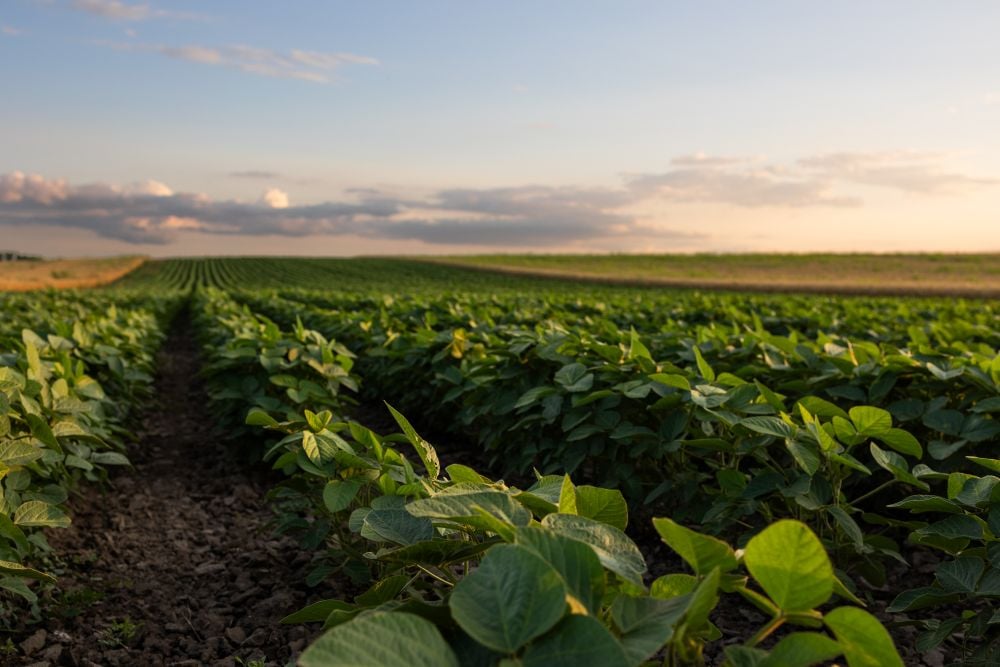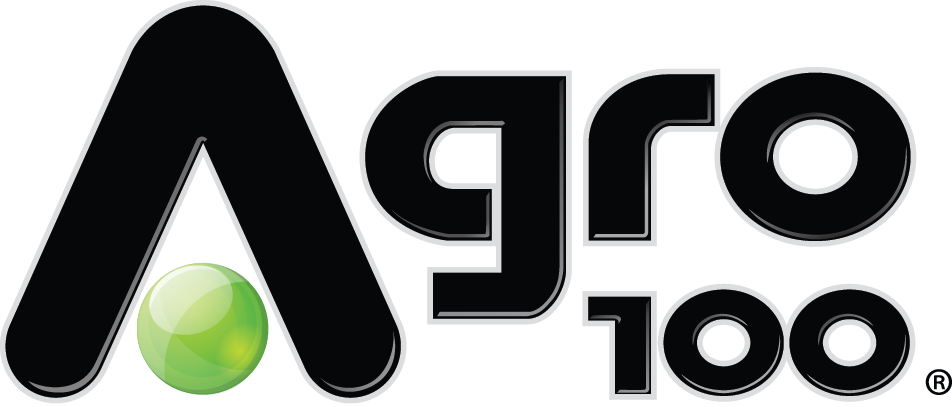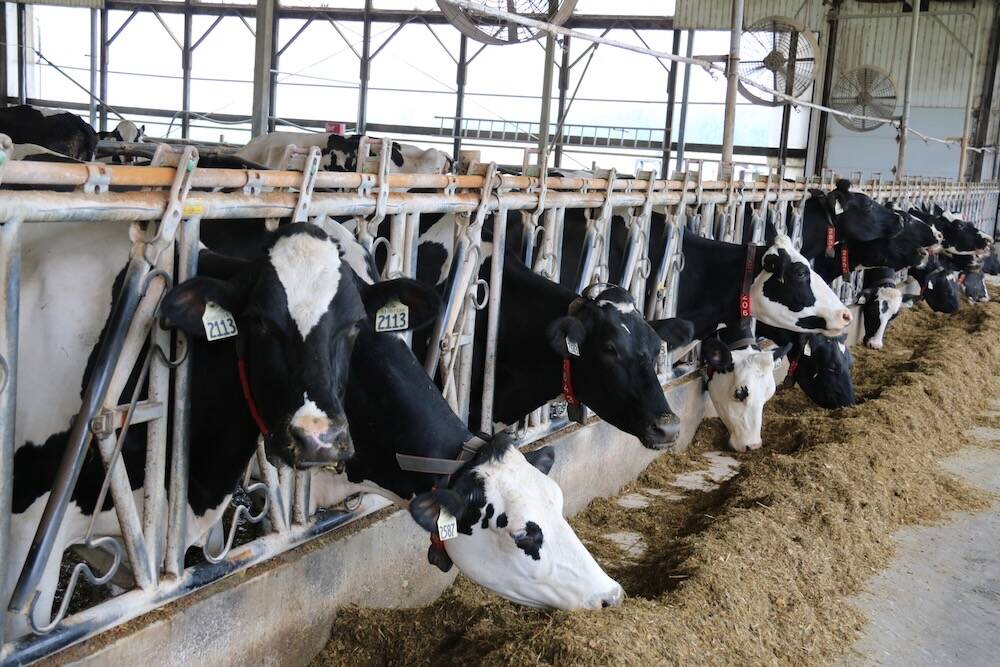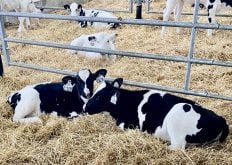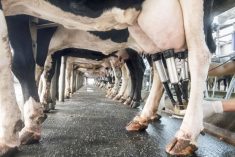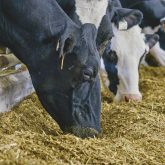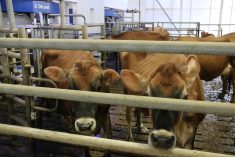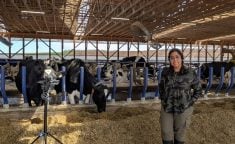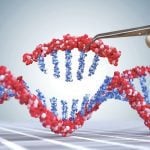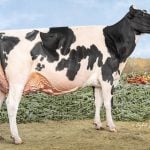Glacier FarmMedia – A multinational group dedicated to water issues transcending the U.S.-Canada border says they’ll be reviewing two proposed dairy operations in North Dakota.
The projects, located near the Red River on the U.S. side, has drawn the scrutiny of the International Joint Commission (IJC) following pressure from Manitoba’s environment minister, the province announced on Oct. 9.
Why it matters : Two massive new North Dakota dairies have created concern in Manitoba that they wcould dump well over targeted phosphorus levels into Lake Winnipeg.
Read Also
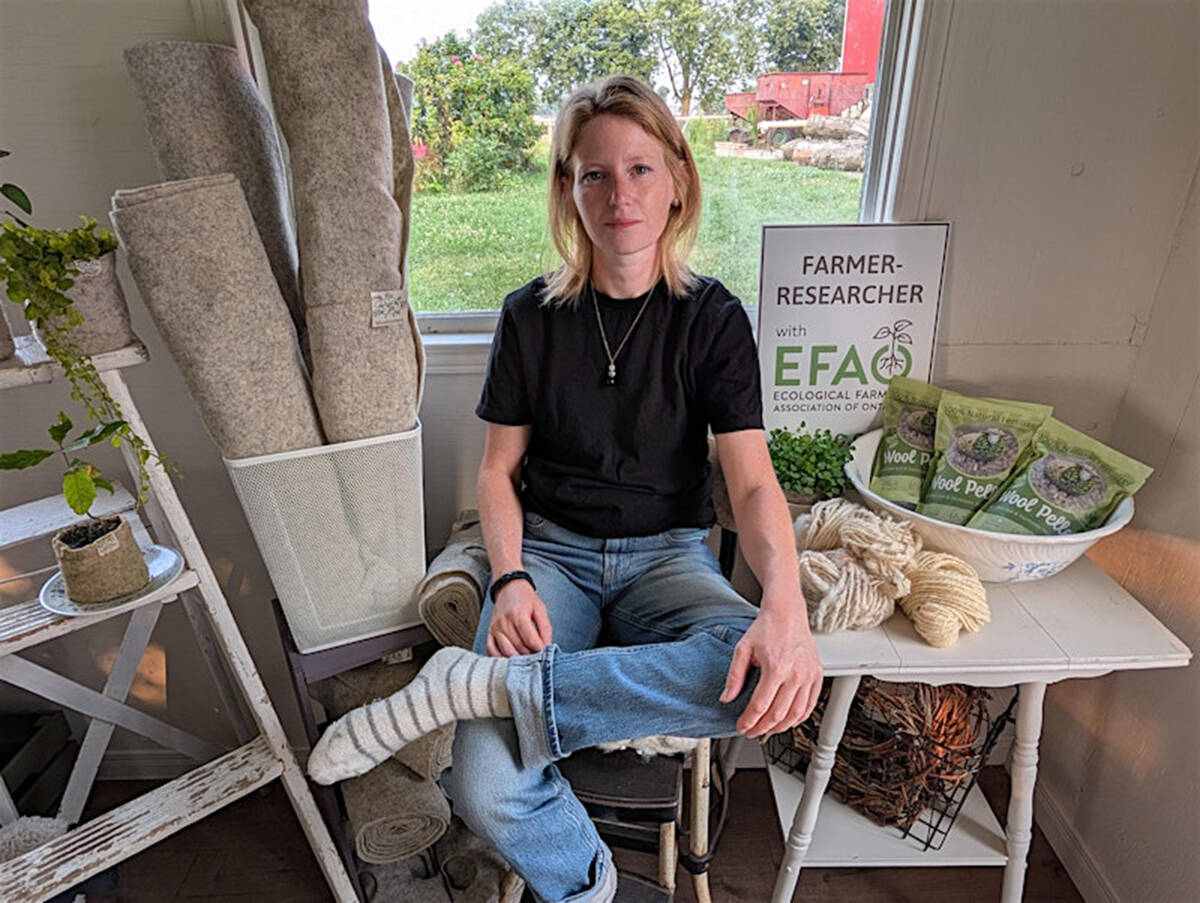
From fleece to fertile ground
Lindsey Weber turns Canadian wool into sustainable, biodegradable weed suppression and horticulture alternatives to plastic, boosting farm sustainability and revitalizing Canada’s wool industry.
The operations are Abercrombie Dairy, which will be a 12,500-head milking operation near Wahpeton, south of Fargo, and Herberg Dairy, a 25,000-head operation slated near Hillsboro, north of Fargo. The projects got permits to start construction in January 2025. Both are owned by Riverview LLP, a Minnesota-based dairy agribusiness.
Those dairy mega-projects could add more nutrients to an already struggling Lake Winnipeg downstream, according to Mike Moyes, Manitoba’s environment and climate change minister.
“We’re happy that the IJC was referred and that they’re looking at it (and) going through that process,” Moyes said. “Obviously, we want to move as quickly as possible. This is a major operation, and we want to make sure that all the different dairies, including those in North Dakota, are taking this seriously and doing everything they can to mitigate any nutrients that potentially could go into the waterways.”
According to the province, the International Joint Commission has told its offshoot, the International Red River Watershed Board (IRRWB), to look at permits and information related to the dairy projects. The board will assess whether the projects properly considered impacts on water quality and aquatic ecosystems at the international boundary, particularly regarding nutrient targets for the Red River.
The Red River contributes only about 15 per cent of total water flow into Lake Winnipeg. A late 2024 provincial report on nutrient targets, however, reported that it carries the largest load of nutrients into the lake out of all the water body’s major tributaries.
“The health of Manitoba’s lakes and rivers is a top priority for our government, and we want to be sure that developments upstream don’t negatively affect Lake Winnipeg and the Red River,” Moyes said. “We are working with partners upstream and taking action at home to ensure developments address the risk of sending even more algae-causing nutrients into Lake Winnipeg. We must protect Lake Winnipeg for generations to come.”
Water nutrient levels have been a loaded issue in Manitoba. Animal agriculture, the pork industry in particular, has taken significant public heat over the issue. The sector, in turn, has repeatedly pointed to improvements in their sector, such as better manure management. Fertilizer runoff in the grain sector has been another investigated source.
Local agriculture, meanwhile, strongly contests that blame, with arguments pointing fingers at the City of Winnipeg and incidences of sewage flowing into the river following major rain events, or to nutrient sources coming in from further south.
Operations would quadruple North Dakota herd
The two North Dakota facilities will add 37,500 milking cows to the state, more than quadrupling the current herd of about 8,900 cows and nearly matching Manitoba’s entire provincial herd of roughly 45,000 cows across 240 farms, the Canadian Centre for Policy Alternatives (CCPA) said in a post May 25.
The operations are located within 1.5 miles of the Red River or its tributaries. The Manitoba Eco-Network said on its website that waste from the operations will be stored in lagoons covering an area equivalent to 52 Canadian football fields, with no municipal wastewater treatment. The manure slurry will be spread on agricultural fields as fertilizer.
“Our concern about this operation is just the sheer amount of dairy cows this close to the watershed,” Moyes said. “We’re talking about tens of thousands of dairy cows about a mile away.”
The CCPA has echoed Manitoba’s concerns that excess manure application could lead to accumulation of phosphorus and nitrogen in rivers and lakes, which feed blue-green algae blooms in Lake Winnipeg. They also said that pollution from the operations could contain antibiotics, hormones, bacteria and heavy metals.
Moyes was clear that the government’s concerns are not anti-agriculture.
“We recognize the importance that agriculture plays in in our economy, in our world and especially in water management,” he said. “We stand with farmers. We stand with all the producers, but it needs to be done in the right way.”
The Manitoba Eco-Network, along with the Save Lake Winnipeg Project and Animal Justice, called on both federal and provincial governments to refer the issue to the IJC.
Moyes is also encouraging concerned citizens to get involved.
“We’re trying to really raise that alarm bell that this is a concern for our water, that mitigation measures have to be taken for these mega dairy farms, and so any Manitoban out there, if they’re concerned, reach out to your to your local MLA and try to let them know how important this is.”
Phosphorus levels over target
In late 2022, the governments of Canada and the U.S. approved a nutrient loading goal for the Red River of 1,400 tons of phosphorus and 9,525 tons of nitrogen per year, based on recommendations made by the IJC.
That phosphorus target is a reduction of about 45 per cent from current levels, according to the Manitoba Eco-Network. The CCPA said that Manitoba’s 2024 nutrient report shows an average of 2,500 tonnes of phosphorus per year flowing from the U.S. through the Red River through 2023.
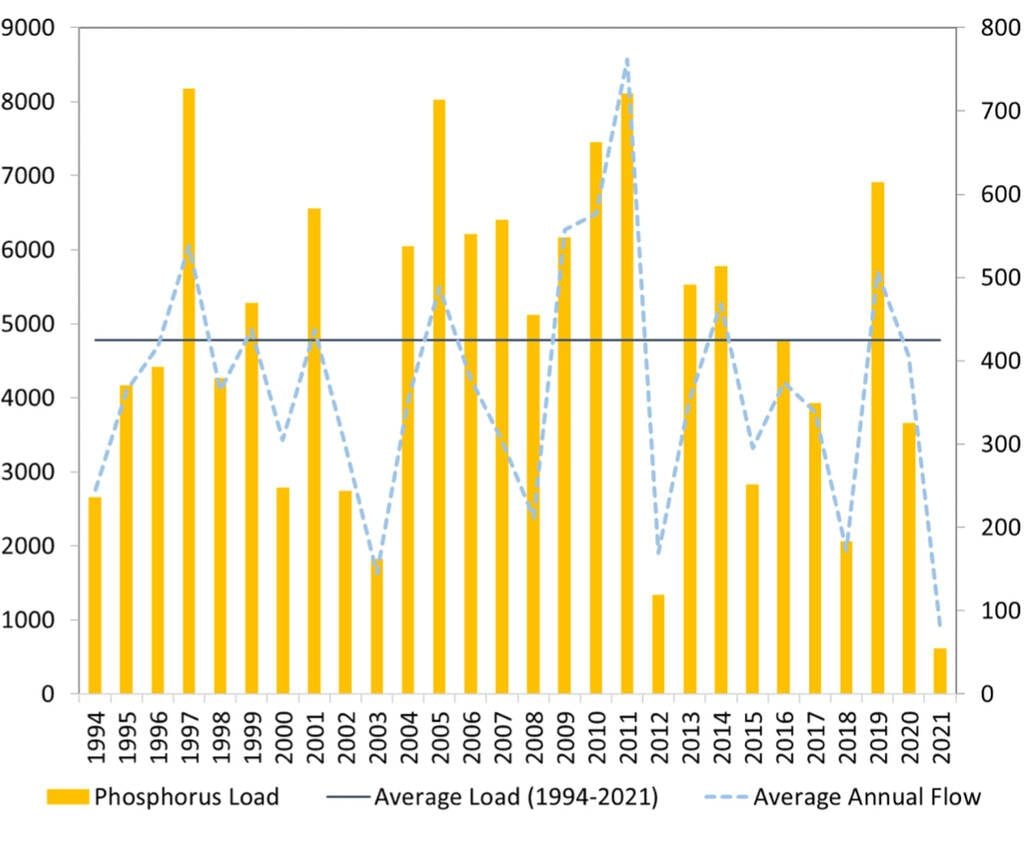
Manitoba, meanwhile, set its own nutrient reduction targets for Lake Winnipeg late last year, broken down by tributary. The goal for the Red River, in that plan, was a loading target of 2,800 tonnes per year of phosphorus and 19,050 tonnes of nitrogen, as measured at Selkirk.
Nutrients from multiple sources
Previous studies have suggested that about half the nutrients in Lake Winnipeg come from within Manitoba, with the rest flowing in from upstream areas such as Ontario, Saskatchewan, Alberta, North Dakota, Minnesota, and small areas of South Dakota and Montana. The Winnipeg, Saskatchewan and Dauphin rivers also contribute significant amounts of nutrients and water flow to the lake, the Manitoba government’s December 2024 report said.
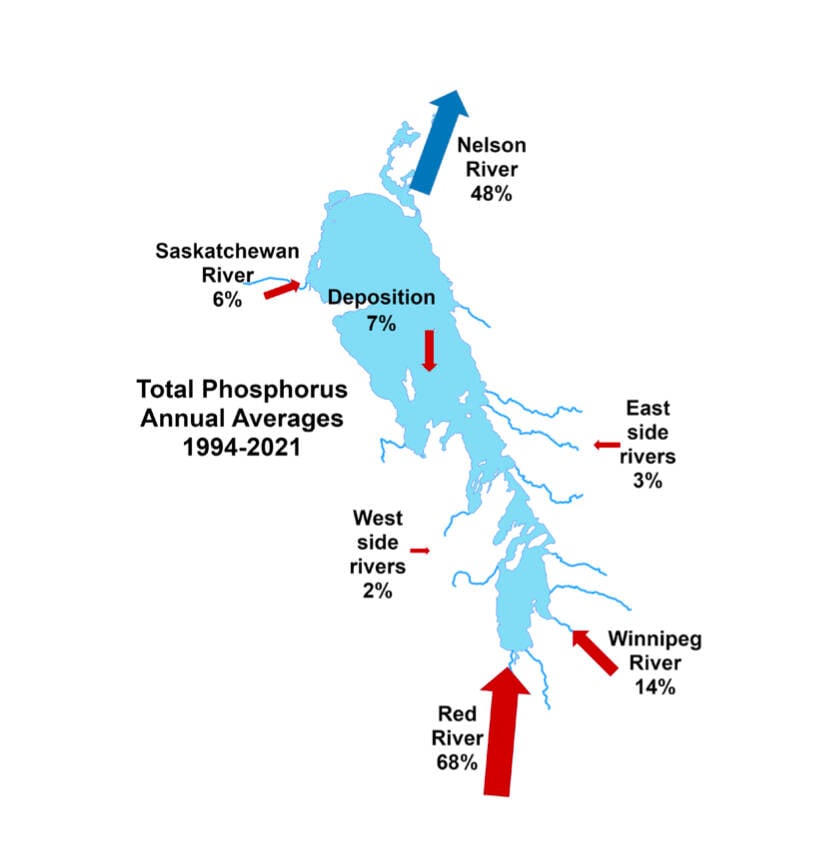
The province is taking a holistic approach to water management, bringing on a new advisory board for Lake Winnipeg and working with other stakeholders like nearby municipalities and the City of Winnipeg, Moyes said.
“We’re trying to protect more nature and wetlands and peat…and we want to work with with agriculture. We want to work with with everyday farmers on their operations to make sure they’re that they’re as efficient as possible.”
Moyes wrote to the IRRWB in June, then followed up with letters to North Dakota Governor Kelly Armstrong and Canada’s Foreign Affairs Minister Anita Anand. He asked them to support the IJC’s work and act on any recommendations that come out of the review.

